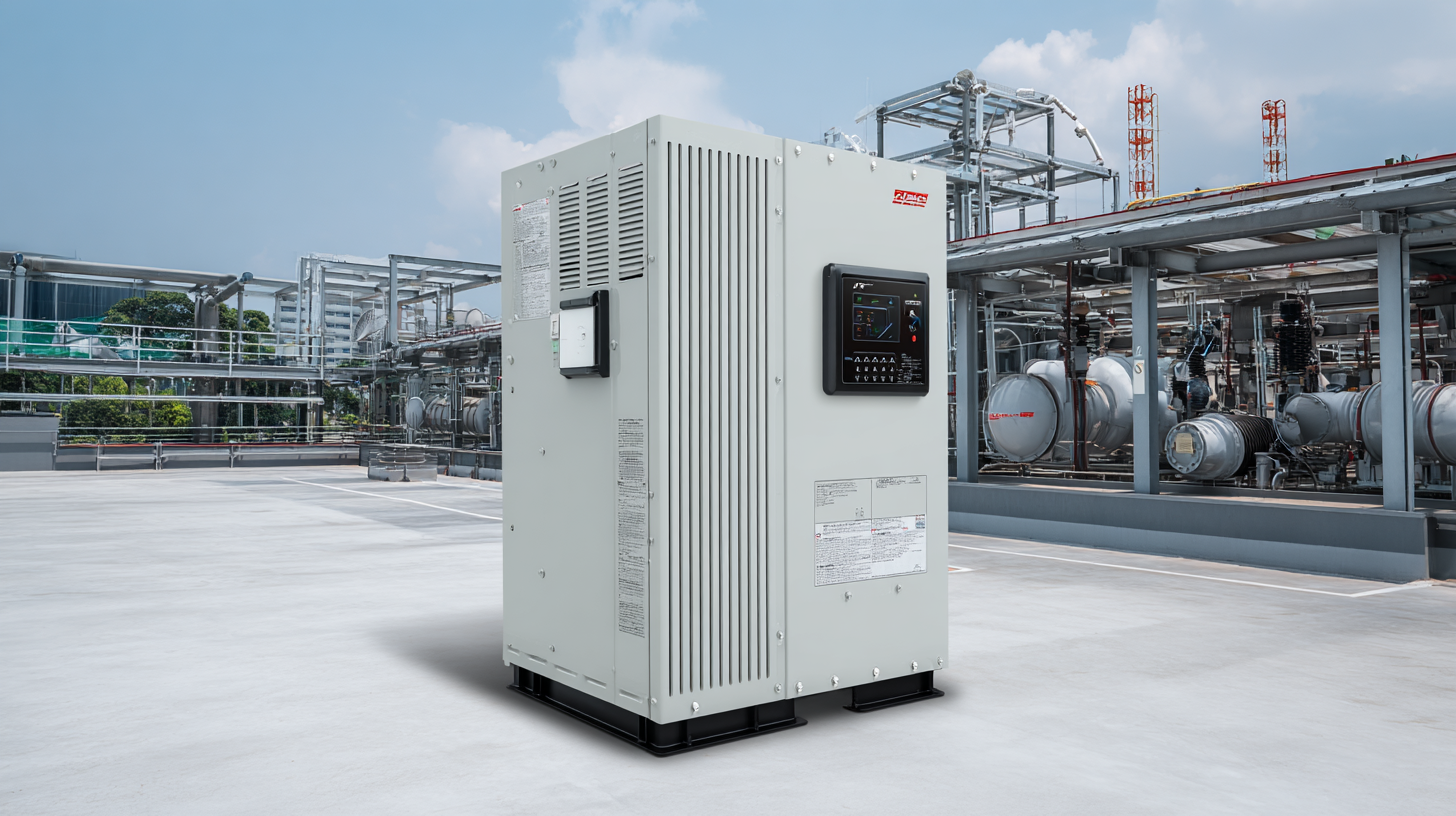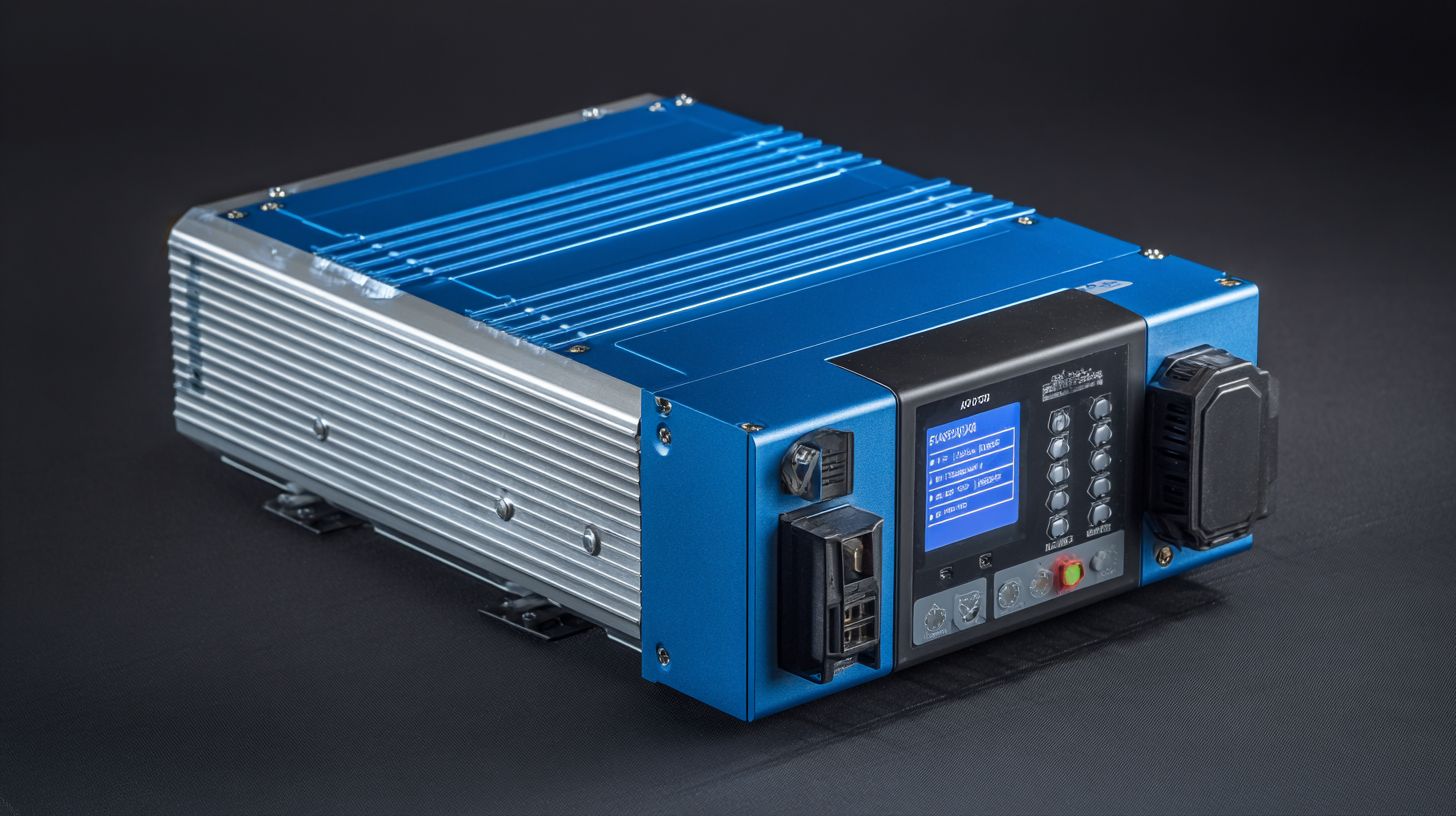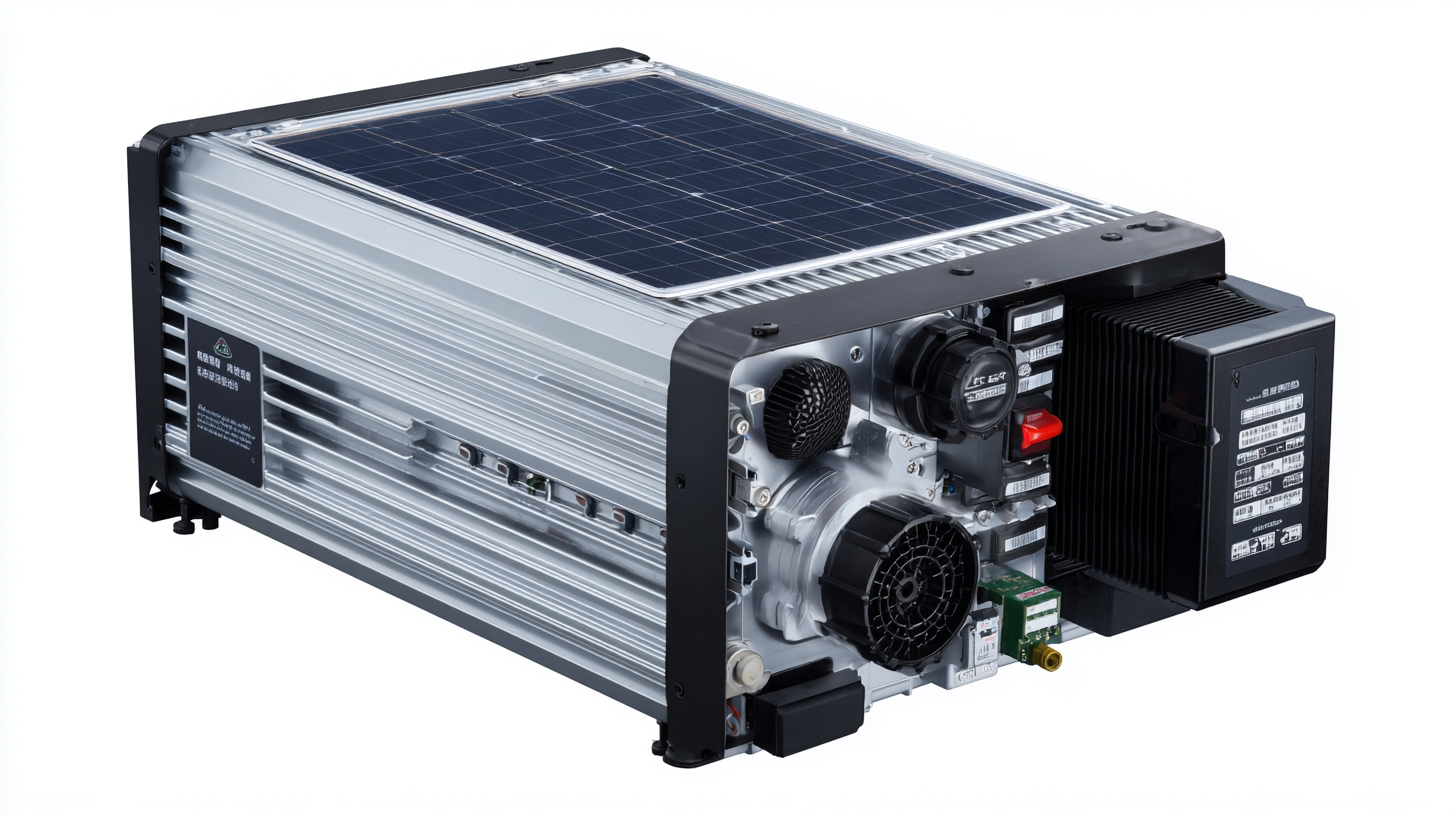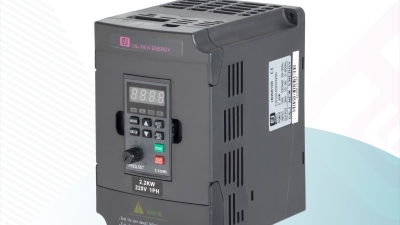Global Leaders in Manufacturing and Exporting the Best Ac Power Inverter Solutions
Table of Contents
- Understanding AC Power Inverters: Types and Functions
- Key Features to Look for in High-Quality AC Power Inverters
- Top Global Manufacturers Leading the AC Inverter Market
- Comparative Analysis of AC Inverter Solutions: Pros and Cons
- How to Choose the Right AC Power Inverter for Your Needs
- Maximizing Efficiency with Factory Price Water Pump Motors: Insights from the Latest VFD Market Trends and Analysis
- FAQS
- Related Posts
As the world keeps ramping up its need for smarter, more efficient energy solutions, you can't ignore just how important AC power inverters are when it comes to improving energy storage and management. I recently came across a market report from Research and Markets, and it predicts that the global market for these inverters could hit around $11.11 billion by 2025. A big chunk of this growth is fueled by breakthroughs in renewable energy tech and the growing demand for backup power systems—things we all find pretty essential nowadays. One company that’s really standing out in this space is Zhejiang Cejia Electric Co., Ltd. They've been around for over 20 years, really focusing on delivering top-notch energy storage solutions. And honestly, with their dedication to quality and prices that don’t break the bank, CEJIA is making big moves from China into the global market—where folks really care about reliability and performance. Looking at how manufacturers and exporters are stepping up, it’s clear companies like CEJIA are leading the charge in meeting the world’s changing energy needs.

Understanding AC Power Inverters: Types and Functions
AC power inverters are pretty important in a bunch of different applications. Basically, they take direct current (DC) from things like batteries or panels and turn it into the alternating current (AC) that most of our devices need to work. If you're new to all this, it’s helpful to know there are a few main types of inverters out there, like pure sine wave, modified sine wave, and grid-tie inverters. Each one is designed to handle different voltage and power needs. For instance, pure sine wave inverters give you really clean power—great if you’re running sensitive electronics—whereas modified sine wave inverters are often used for less critical stuff and tend to be a bit more affordable.
You can see just how much these inverters are becoming part of our daily lives across various sectors—think automotive, consumer gadgets, and even telecom. The market is also shifting towards more advanced silicon carbide (SiC) inverters, which is a big deal and is expected to grow a lot by 2028, thanks to improvements in efficiency and performance. Industries like aerospace and defense are jumping on this bandwagon because they need power solutions that are both sturdy and reliable. By understanding the different types of inverters and what they do, businesses can really make smarter choices that help boost efficiency and make their products last longer. It’s pretty fascinating how much this tech is shaping so many industries, right?
Global Leaders in Manufacturing and Exporting the Best AC Power Inverter Solutions
| Type | Function | Power Rating (W) | Efficiency (%) | Applications |
|---|---|---|---|---|
| Pure Sine Wave | High quality power for sensitive devices | 3000 | 90 | Home appliances, Medical devices |
| Modified Sine Wave | Basic power solution for simple devices | 1500 | 85 | Lighting, Fans |
| Grid Tie Inverter | Connects solar panels to the grid | 5000 | 95 | Solar energy systems |
| Off-Grid Inverter | Standalone power solutions | 2000 | 92 | Remote areas, RVs |
| Bi-Directional Inverter | Converts DC to AC and vice versa | 2500 | 94 | Energy storage management |
Key Features to Look for in High-Quality AC Power Inverters
When you're on the hunt for a high-quality AC power inverter, there are a few key features to keep in mind to make sure you get something reliable and performs well. A good inverter should efficiently convert energy—that’s pretty vital whether you're using it at home or running a business. For example, a three-phase microinverter often stands out because it offers better energy efficiency and can help keep the power output more steady. And if you're looking at PV inverters, having the flexibility of a two-stage design is a real plus—it gives you better control over the DC link voltage, which improves your whole system's performance.
Another important thing is how well the inverter can handle different loads without losing efficiency. Dual-fuel models are pretty impressive here because they can adapt to changing power demands, so your critical appliances stay up and running even during busy times. Recent reports also say that newer inverter tech can actually cut down the overall cost of ownership — stuff like real-time monitoring and automatic load management added in makes things easier and smarter. Paying attention to these features when you’re shopping can really help you pick something that fits your needs perfectly in this constantly changing market.
Global Leaders in Manufacturing and Exporting AC Power Inverter Solutions
This chart illustrates the market share of different AC power inverter solutions based on their efficiency ratings and price range. The data reflects various manufacturers' capabilities in providing high-quality AC power inverters.
Top Global Manufacturers Leading the AC Inverter Market
Hey, have you noticed how fast the AC inverter market is changing these days? Leading companies are really setting the bar high for global standards. Take Zhejiang Cejia Electric Co., Ltd., for example — they’ve been in the game for over 20 years, always pushing the envelope with innovative energy storage solutions. They focus on delivering quality without breaking the bank, showing just how well manufacturers can do when they combine good tech with competitive pricing. According to a recent report from Research and Markets, the worldwide AC inverter market is expected to grow at a steady CAGR of around 14.6% from 2021 to 2026 — which basically means there’s a huge demand for smarter energy management solutions out there.

Now, choosing the right AC inverter isn’t something you wanna take lightly. When you’re shopping around, look for models that incorporate advanced technology, like pure sine wave output. Trust me, that kind of tech makes a huge difference, especially if you’re powering sensitive electronics. Oh, and don’t forget to check if the manufacturer offers solid after-sales support — that can really save your skin down the road and keep your investment running smoothly.
So, whenever you’re exploring options, it’s smart to go with brands that have a proven track record and happy customers. Investing in a quality product from a well-known leader basically guarantees your energy setup will be efficient, reliable, and built to last. It’s all about making smarter choices that pay off in the long run.
Comparative Analysis of AC Inverter Solutions: Pros and Cons
In today’s fast-changing world of energy solutions, picking the right AC power inverter is pretty important for both businesses and regular folks. When you compare different inverter options, you start to see that each has its own set of advantages and drawbacks—that’s something to keep in mind when making a choice. For example, high-efficiency inverters often convert energy more effectively, which can save you money over time. But, they usually come with a bigger price tag upfront, and that can be a bit of a hurdle if you’re on a tight budget. On the flip side, cheaper models might not have all the fancy features or the reliability you’d want, and that can impact how well they work in the long run.
Now, if you’re looking at who’s leading the way in manufacturing and exporting these power inverters, Zhejiang Cejia Electric Co., Ltd. is definitely a name to know. With over 20 years under their belt, they really understand the ins and outs of this industry. They offer specialized energy storage power supply solutions tailored to what the market needs, making it easier for customers to find products that fit their specific requirements. Thanks to their focus on quality and competitive prices, Cejia has built a solid reputation as a trusted partner in the energy game. They make it simpler for businesses—and even individuals—to pick reliable, efficient AC inverters without sacrificing performance or breaking the bank.
How to Choose the Right AC Power Inverter for Your Needs
When you're trying to pick out the right AC power inverter for what you need, it’s really important to take a good look at what your application actually requires. Both industrial and commercial sectors are moving super fast, especially with new energy storage tech that’s designed for giant operations. Knowing the specific voltage and capacity you need can really help you find an inverter that’s efficient and matches the demands of today’s infrastructure.
Here’s a little tip: don’t forget to consider the total power load—both the peak and continuous power your system will need. It’s also worth looking for inverters that are modular, so you can easily expand or tweak things as your needs grow. Plus, keeping an eye on monitoring features can give you insights down the line, helping you save energy and keep everything running smoothly.
Since the demand for smarter power solutions is skyrocketing, it’s a smart move to focus on technologies that are both efficient and adaptable. The growth in high-efficiency electrical systems really shows that investing in more advanced inverter tech could bring big benefits to your operations. Always stay updated on the latest inverter innovations to make sure you’re choosing something that’ll serve your long-term energy management goals without a hitch.

Maximizing Efficiency with Factory Price Water Pump Motors: Insights from the Latest VFD Market Trends and Analysis
The demand for efficient water pump motors continues to soar as industries strive to optimize performance while reducing operational costs. In parallel with the latest Variable Frequency Drive (VFD) market trends, the CJF330 Series Mini Type AC Drive stands out as a vital solution for manufacturers seeking to enhance the efficiency of small power applications. Utilizing advanced V/f control technology, the CJF330 not only supports various functionalities such as PID control and multiple-speed settings but also boasts a compact design ideal for installations where space is limited.
According to recent industry reports, the global VFD market is projected to grow at a CAGR of approximately 7.2% over the next five years, driven by the increased adoption of automation and energy efficiency measures across multiple sectors. The integration of small yet powerful AC drives like the CJF330 plays a pivotal role in this transformation. Specifically designed for small automation equipment, this product is perfectly suited for applications in electronic devices, food packaging, and other industries where precision and performance are paramount.
One of the critical advantages of the CJF330 Series is its capability to facilitate seamless Modbus communication, allowing for intuitive integration within existing systems. This is particularly beneficial for OEM markets where flexibility and ease of deployment are essential. As businesses seek to maximize efficiency while maintaining factory price competitiveness, investing in advanced solutions like the CJF330 is increasingly becoming a strategic imperative for manufacturers committed to sustaining growth in an evolving marketplace.
FAQS
C power inverter?
The main types of AC inverters are pure sine wave inverters, modified sine wave inverters, and grid-tie inverters, each designed for different voltage and power quality requirements.
Pure sine wave inverters deliver high-quality power, which is suitable for sensitive electronics, ensuring optimal performance and longevity of the devices.
High-efficiency inverters provide better energy conversion, leading to cost savings in the long run, although they may require a higher upfront investment.
Budget-friendly inverter models may lack advanced features and can affect performance and reliability over time compared to higher-end models.
The market for silicon carbide (SiC)-based power electronics and inverters is expected to expand significantly due to advancements in efficiency and performance.
Zhejiang Cejia Electric Co., Ltd. leverages over 20 years of industry experience to manufacture and export AC power inverter solutions, offering professional energy storage power supply solutions tailored to market demands.
By understanding the types of inverters available and their specific functionalities, businesses can make informed decisions that enhance operational efficiency and product longevity.
Choosing the wrong AC inverter can impact performance and reliability, potentially leading to increased operational costs and degraded performance of connected devices.
Consumers should consider factors such as efficiency, cost, application requirements, and the specific functionalities of different inverter types when selecting an AC power inverter.
Related Posts
-

Understanding the Features and Applications of the Best Low Voltage Electrical Components: A Comprehensive Guide
-

2025 Market Insights on Best Electric Inverters: Data-Driven Strategies for Success
-

The Definitive Ultimate Guide to Choosing the Best Rcd Circuit Breaker for Your Needs
-

How to Choose the Best MCCB Breaker Based on Load Demand and Safety Ratings
-

Choosing the Right DC Circuit Breaker Manufacturer and Comparing Key Industry Standards
-

Real Life Applications of Best Pure Wave Inverter and How to Choose the Right One for Your Business


